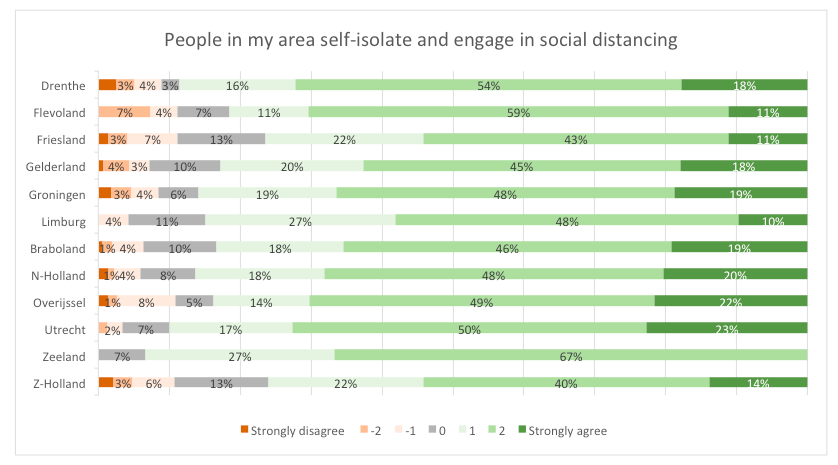Graph for application

In the Netherlands, the first corona-victim was diagnosed on February 27th. The virus probably entered the country through people that went skiing near Italy and subsequently had carnival in the Catholic parts of the Netherlands. This all happened before the authorities realized the problem in its full potential. On March 16th, the whole country went into an 'intelligent lockdown' after an steep rise in infections in Limburg and Brabant. As a result, other provinces in the middle and Northern parts of the Netherlands benefited most from the lockdown in a way that they suffered a much lower infection rates. Although the lockdown applied to the whole country, you could wonder if regions who already experienced so many infections and deaths, also better adhered to the guidelines that were set by the government. Based on the PsyCorona dataset we took a sneak peek to see if people in different parts of the Netherlands, more or less respect and adhere to the social distancing guidelines. What do we see, based on the answers of 1929 people? Respondents from the provinces Utrecht, Drenthe, Overijssel, and Flevoland ‘perform’ best. These are all regions that record the least amount of victims. In contrast, regions with higher death rates, like Limburg and Zuid-Holland, belong to the top 3 of regions that have the lowest reported confirmations of social distancing behaviour. Of course, it makes you wonder why this is the case, and it gives us all the reason to dive deeper into human behaviour during crisis and lockdown.
N.B. Please be aware that this is only a preview. Weights were applied to PsyCorona respondents based on age and sex, to adjust for possible confounds. However, the number of respondents varied greatly between provinces, therefore results should be interpreted with care.

